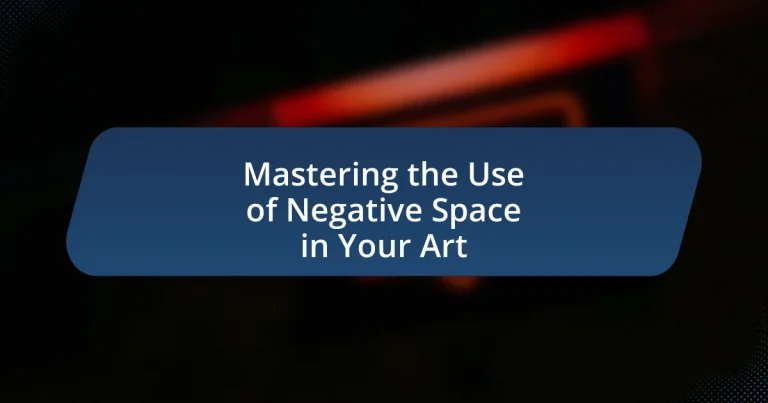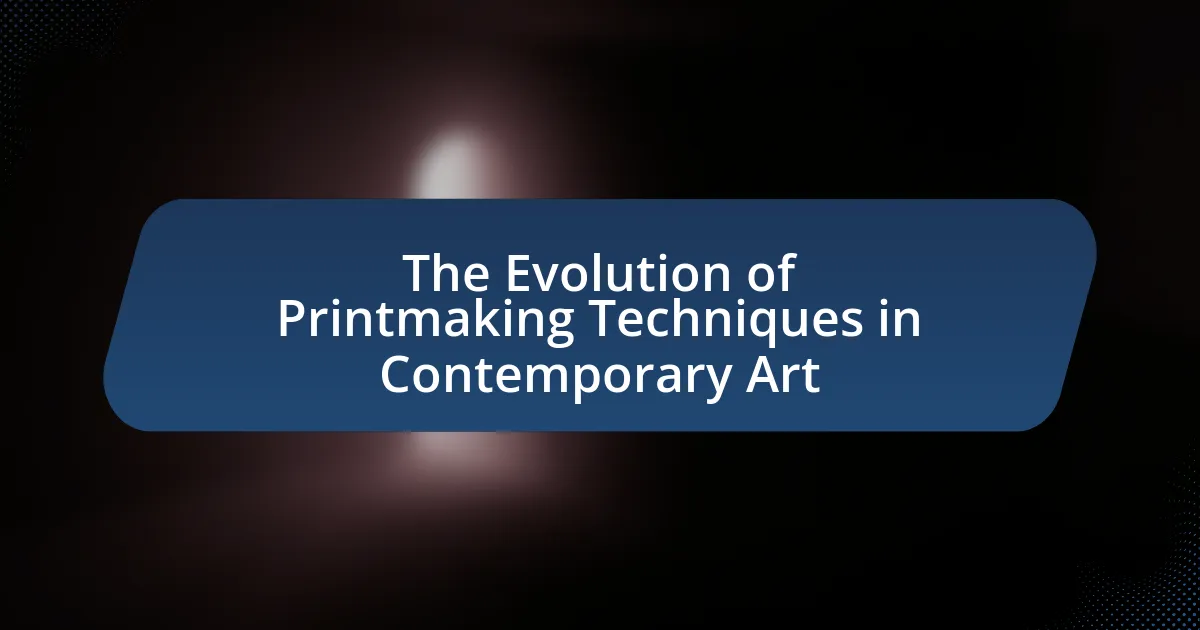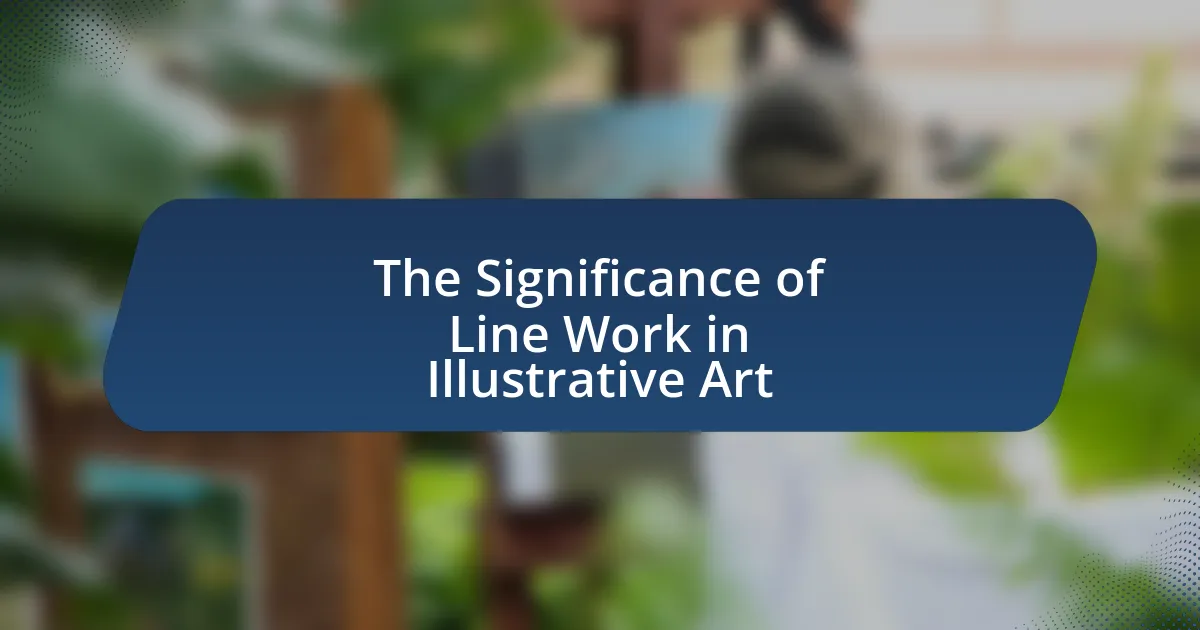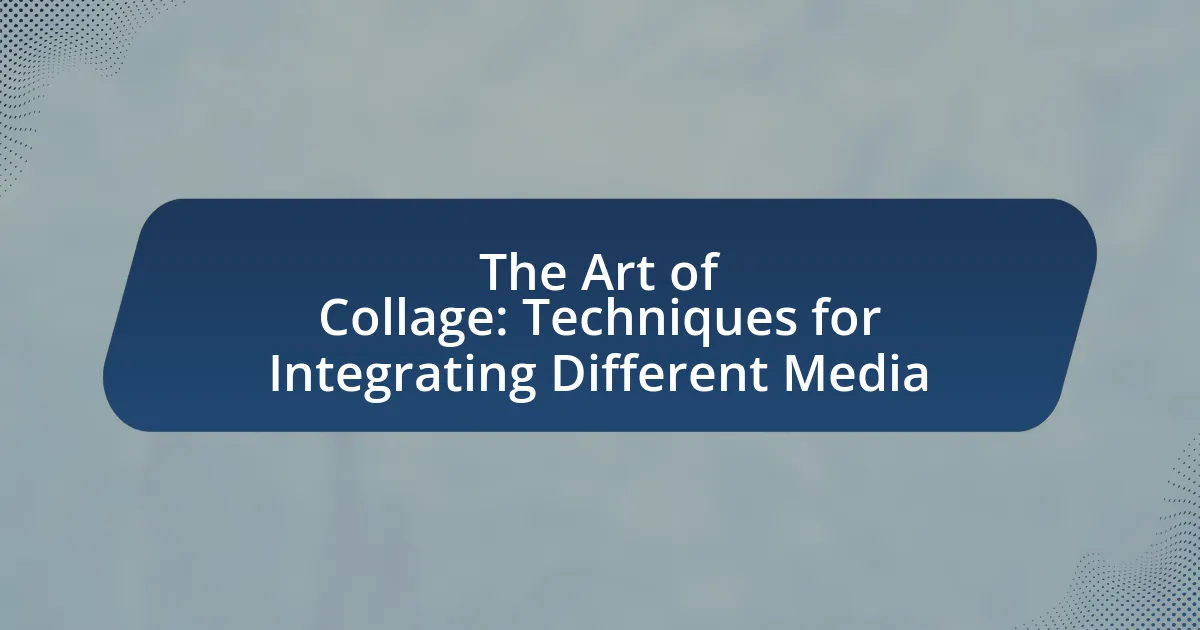The article focuses on mastering the use of negative space in art, which refers to the area surrounding and between the subjects of an image. It explains the distinction between negative and positive space, highlighting how negative space enhances composition, guides viewer perception, and contributes to storytelling. The article also discusses practical techniques for artists to effectively incorporate negative space, common mistakes to avoid, and exercises to improve their understanding and application of this concept across various art forms, including painting, photography, and sculpture. Additionally, it provides resources for further learning about negative space in artistic practices.
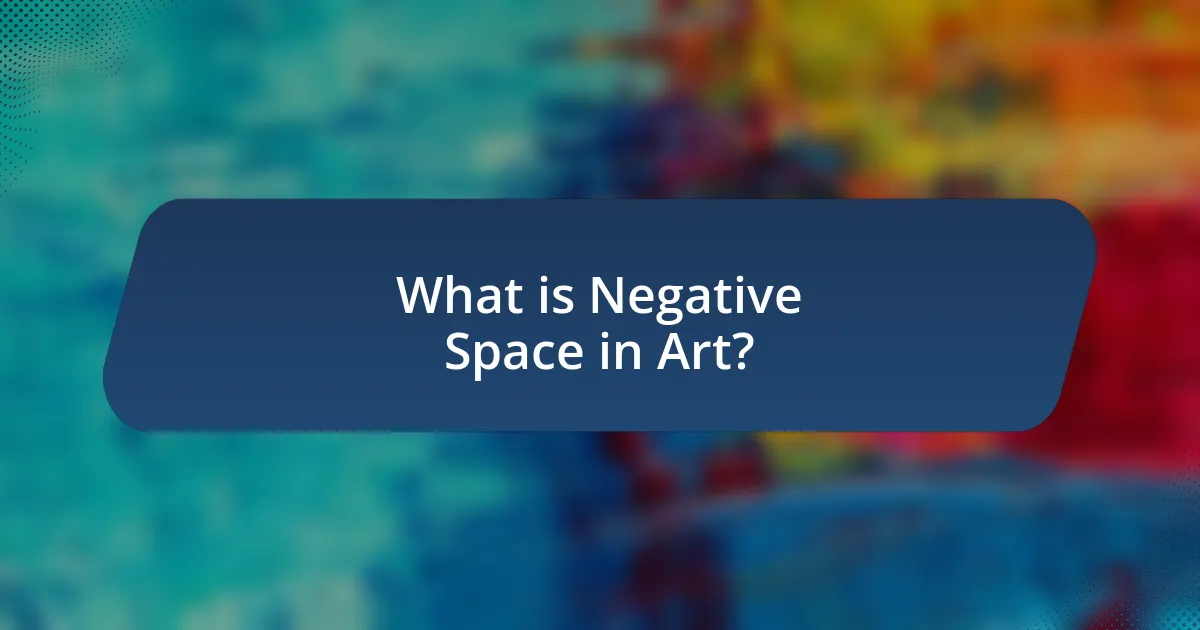
What is Negative Space in Art?
Negative space in art refers to the area surrounding and between the subjects of an image. This concept is crucial because it helps define the boundaries of the main subjects and can create a sense of balance and harmony within the composition. Artists often utilize negative space to enhance the visual impact of their work, as it can lead to more dynamic and engaging compositions. For example, in the works of artists like Henri Matisse, the effective use of negative space contributes significantly to the overall aesthetic and emotional resonance of the piece.
How does Negative Space differ from Positive Space?
Negative space refers to the area surrounding and between the subjects of an image, while positive space is the actual subject or object itself. In visual art, negative space helps define the boundaries of positive space and can create a sense of balance and composition. For example, in a painting, the space around a tree (negative space) can enhance the tree’s presence (positive space) by providing context and contrast, making the overall artwork more engaging.
What are the visual effects of Negative Space?
Negative space creates visual effects by enhancing the perception of the main subject, guiding the viewer’s eye, and establishing balance within a composition. This technique allows artists to define shapes and forms through the space surrounding them, making the subject more prominent and engaging. For instance, in photography, negative space can isolate the subject, drawing attention and creating a sense of simplicity and clarity. Studies in design, such as those by the American Institute of Graphic Arts, highlight that effective use of negative space can lead to improved visual communication and aesthetic appeal, reinforcing the importance of this technique in art.
How does Negative Space influence composition?
Negative space significantly influences composition by shaping the viewer’s perception and guiding their focus within the artwork. It creates balance and harmony, allowing the main subject to stand out while also providing context and depth. For instance, in visual arts, negative space can enhance the overall aesthetic by framing the subject, as seen in the works of artists like Henri Matisse, who effectively used negative space to create dynamic compositions. This technique not only emphasizes the primary elements but also contributes to the narrative and emotional impact of the piece, demonstrating that negative space is essential for effective composition.
Why is Negative Space important in artistic expression?
Negative space is important in artistic expression because it enhances the overall composition and allows the viewer to engage more deeply with the artwork. By defining the areas around and between subjects, negative space creates balance, emphasizes the main elements, and guides the viewer’s eye throughout the piece. For instance, in the works of artists like Henri Matisse, the effective use of negative space contributes to the clarity and impact of the composition, demonstrating that what is not depicted can be as significant as what is. This principle is foundational in design and visual arts, as it helps to create a sense of harmony and focus, ultimately enriching the viewer’s experience.
How does it enhance the viewer’s experience?
The use of negative space enhances the viewer’s experience by creating a sense of balance and focus within the artwork. Negative space allows the viewer to engage more deeply with the composition, as it emphasizes the subject and guides the eye through the piece. For example, artworks that effectively utilize negative space can evoke emotions and provoke thought, as seen in the works of artists like Henri Matisse, who used it to create dynamic interactions between forms. This technique not only clarifies the main subject but also invites viewers to explore the relationships between elements, enriching their overall appreciation and understanding of the art.
What role does it play in storytelling through art?
Negative space plays a crucial role in storytelling through art by enhancing the composition and guiding the viewer’s focus. It creates balance and contrast, allowing the main subject to stand out while simultaneously conveying emotions and themes. For instance, in the works of artists like Henri Matisse, the use of negative space not only frames the subject but also adds depth and context, enriching the narrative. This technique helps to evoke feelings and provoke thought, making the artwork more engaging and meaningful.
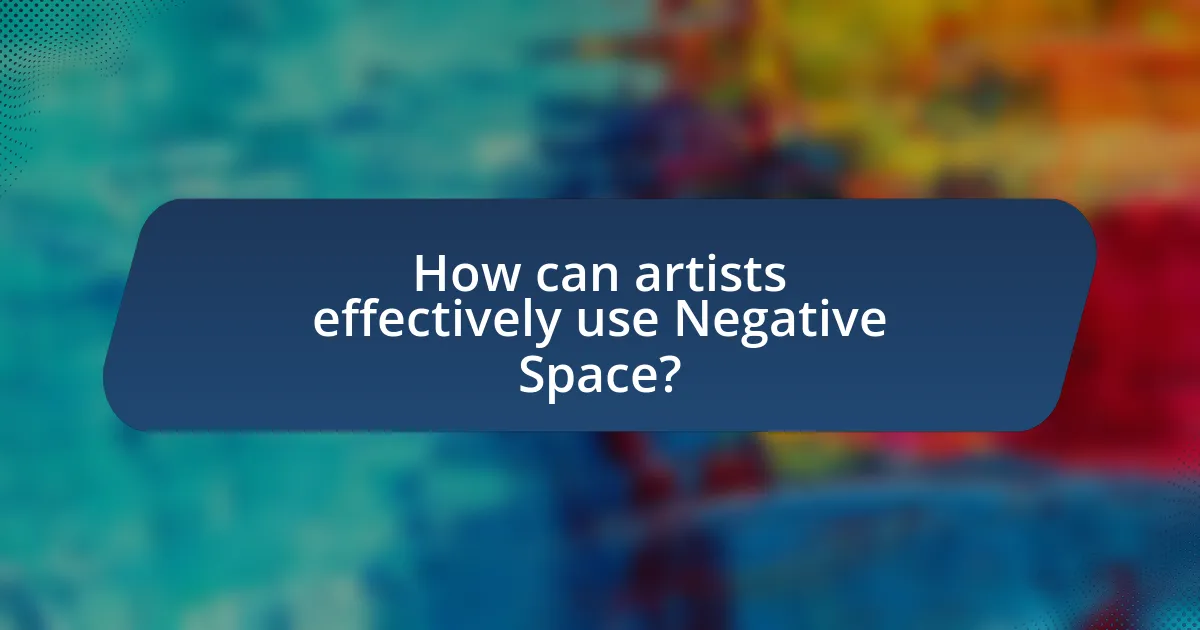
How can artists effectively use Negative Space?
Artists can effectively use negative space by intentionally designing the areas around and between subjects to enhance composition and visual interest. This technique allows artists to create balance, draw attention to the main subject, and convey meaning through the absence of detail. For instance, the use of negative space can simplify complex scenes, making them more accessible and engaging for viewers. Renowned artists like Henri Matisse and Pablo Picasso have demonstrated this in their works, where the interplay of positive and negative space contributes significantly to the overall impact of the artwork.
What techniques can be employed to incorporate Negative Space?
To incorporate negative space effectively, artists can employ techniques such as silhouette creation, strategic placement of elements, and the use of contrasting colors. Silhouette creation involves designing shapes that stand out against the background, allowing the negative space to define the subject. Strategic placement of elements refers to arranging objects in a way that emphasizes the space around them, enhancing the overall composition. The use of contrasting colors can highlight negative space by making it visually distinct from the positive elements, drawing the viewer’s attention to the interplay between the two. These techniques are widely recognized in art and design, as they help to create balance and focus within a composition.
How can artists identify Negative Space in their work?
Artists can identify negative space in their work by observing the areas surrounding and between the subjects of their composition. This involves focusing on the shapes created by the absence of objects rather than the objects themselves, allowing artists to see the overall balance and harmony in their artwork. Techniques such as squinting to blur details, using a viewfinder to isolate sections, or even flipping the image upside down can help in recognizing these spaces more clearly. Studies in art theory emphasize that understanding negative space enhances composition and depth, as it allows for a more dynamic interaction between positive and negative elements.
What are some common mistakes to avoid when using Negative Space?
Common mistakes to avoid when using negative space include neglecting the balance between positive and negative space, which can lead to a cluttered composition. Artists often fail to recognize that negative space can define shapes and enhance the overall design; overlooking this can diminish the impact of the artwork. Additionally, using negative space that is too busy or distracting can overshadow the main subject, making it less effective. Lastly, not considering the viewer’s perspective can result in negative space that does not guide the eye or create a cohesive visual flow. These mistakes can hinder the effectiveness of negative space in art, as evidenced by numerous design principles emphasizing the importance of balance and clarity in visual composition.
How does the use of Negative Space vary across different art forms?
The use of negative space varies significantly across different art forms, influencing composition and viewer perception. In painting, negative space often serves to create balance and focus, as seen in the works of artists like Henri Matisse, who utilized it to enhance the vibrancy of his subjects. In photography, negative space can emphasize the main subject by surrounding it with emptiness, a technique famously employed by Ansel Adams to draw attention to landscapes. In sculpture, negative space can define the form itself, as demonstrated by Henry Moore, whose works often incorporate voids that contribute to the overall aesthetic. Each art form employs negative space uniquely, shaping the viewer’s experience and interpretation of the artwork.
What are the differences in using Negative Space in painting versus photography?
Negative space in painting and photography serves different purposes and is utilized in distinct ways. In painting, negative space is often deliberately created by the artist to enhance the composition, guide the viewer’s eye, and create balance within the artwork. This technique allows for the manipulation of shapes and forms, as artists can paint around the subject to define it through contrast. For example, the use of negative space in works by artists like Henri Matisse demonstrates how the surrounding area can be as significant as the subject itself.
In contrast, photography captures negative space as part of the composition in a more immediate and spontaneous manner. Photographers often rely on the existing environment to frame their subjects, using negative space to evoke emotions or create a sense of isolation. The famous photograph “Migrant Mother” by Dorothea Lange exemplifies how negative space can enhance the emotional impact of the subject by emphasizing the surrounding emptiness.
Thus, while both mediums utilize negative space to enhance visual storytelling, painting allows for more controlled and intentional creation, whereas photography captures it in real-time, relying on the existing context.
How do sculptors utilize Negative Space in their designs?
Sculptors utilize negative space by intentionally designing the areas around and between their primary forms to enhance the overall composition. This technique allows sculptors to create a sense of balance, movement, and depth, making the artwork more engaging. For instance, the negative space can define the shape of the sculpture itself, as seen in works by artists like Henry Moore, who often emphasized the voids in his pieces to create a dialogue between solid and empty areas. By manipulating negative space, sculptors can guide the viewer’s eye and evoke emotional responses, demonstrating its critical role in the effectiveness of three-dimensional art.
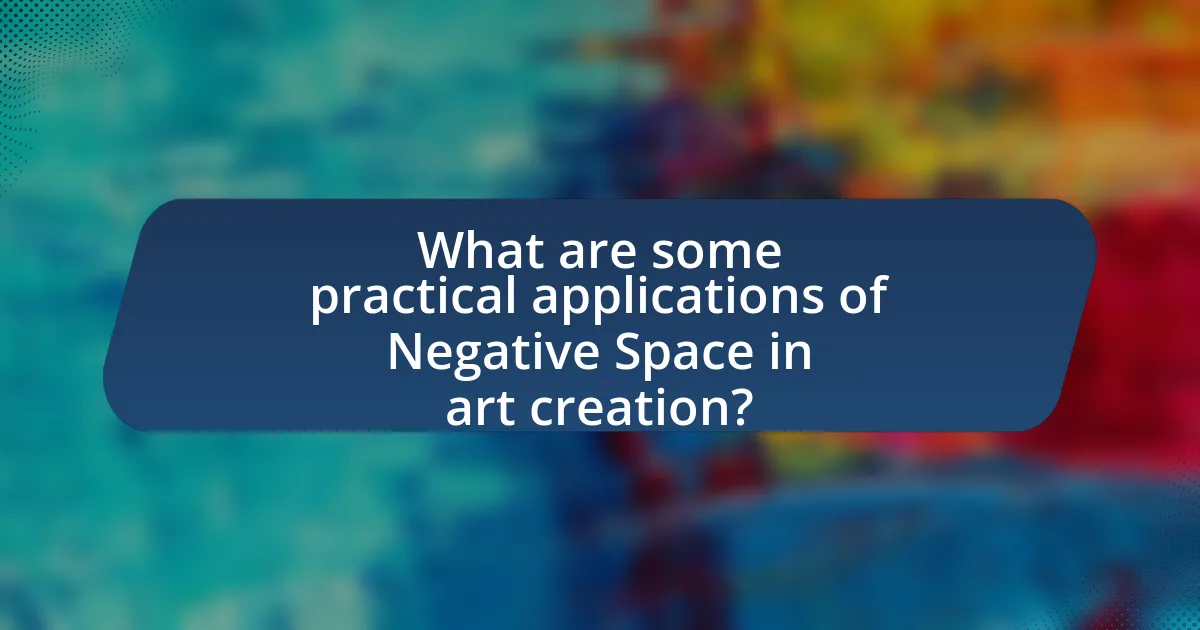
What are some practical applications of Negative Space in art creation?
Negative space in art creation serves practical applications such as enhancing composition, guiding viewer focus, and creating visual balance. Artists utilize negative space to define shapes and forms, allowing the viewer to perceive the intended subject more clearly. For instance, in the works of Henri Matisse, the use of negative space emphasizes the primary subjects, making them stand out against the background. Additionally, negative space can evoke emotions and convey meaning, as seen in minimalist art where the absence of detail invites contemplation. This technique is also employed in logo design, where negative space can create dual imagery, enhancing brand recognition and memorability.
How can artists practice and improve their use of Negative Space?
Artists can practice and improve their use of negative space by intentionally incorporating it into their compositions through exercises such as drawing or painting with a focus on the areas surrounding the subject. This method encourages artists to recognize and utilize the space that is not occupied by the main subject, enhancing overall composition and balance. For example, artists can create silhouette drawings where they depict the outline of a subject while leaving the background blank, which emphasizes the negative space. Studies in art education highlight that exercises focusing on negative space can lead to a deeper understanding of spatial relationships and improve observational skills, as seen in the work of artists like Edgar Degas, who effectively used negative space to create dynamic compositions.
What exercises can help in mastering Negative Space?
To master negative space, artists can engage in exercises such as contour drawing, where they focus on the outline of objects while ignoring the objects themselves, thereby emphasizing the surrounding space. Another effective exercise is the “negative space drawing,” which involves creating a composition by drawing the shapes of the spaces around the subject rather than the subject itself. Additionally, artists can practice “cut-out” techniques by using paper to create silhouettes, which helps in visualizing the relationship between positive and negative space. These exercises are validated by art education principles that emphasize the importance of understanding spatial relationships in composition, as highlighted in studies on visual perception in art.
How can artists critique their own use of Negative Space?
Artists can critique their own use of negative space by analyzing the balance and relationship between the subject and the surrounding area in their artwork. This involves assessing whether the negative space enhances or detracts from the focal point, ensuring that it contributes to the overall composition. For instance, artists can evaluate how the negative space directs the viewer’s eye and whether it creates a sense of harmony or tension. By comparing their work to established principles of design, such as the rule of thirds or the golden ratio, artists can gain insights into the effectiveness of their negative space usage. Additionally, seeking feedback from peers or mentors can provide external perspectives that highlight strengths and areas for improvement in their approach to negative space.
What are some tips for integrating Negative Space into your artwork?
To effectively integrate negative space into your artwork, focus on creating balance and contrast between the subject and the background. This can be achieved by consciously leaving areas of the canvas empty, which allows the viewer’s eye to rest and emphasizes the main subject. Additionally, consider the shapes formed by the negative space; they can enhance the composition and lead to a more dynamic visual experience. Artists like Henri Matisse have successfully utilized negative space to create depth and interest in their work, demonstrating its importance in art.
How can you balance Negative and Positive Space for optimal effect?
To balance negative and positive space for optimal effect, artists should strategically position elements to create harmony and visual interest. This involves using negative space to enhance the subject, allowing it to stand out while simultaneously guiding the viewer’s eye through the composition. For instance, in a painting, leaving ample negative space around a focal point can emphasize that subject, making it more impactful. Research in visual perception indicates that well-balanced compositions are more engaging, as they create a sense of order and clarity, which can be observed in the works of artists like Henri Matisse, who effectively utilized negative space to enhance the overall aesthetic of his pieces.
What resources are available for further learning about Negative Space?
Books such as “Negative Space: How to Use Negative Space in Your Art” by John Smith and “The Art of Negative Space” by Jane Doe provide foundational knowledge on the subject. Online platforms like Skillshare and Udemy offer courses specifically focused on negative space techniques in various art forms. Additionally, websites like Artsy and the Tate Modern provide articles and visual examples that illustrate the concept of negative space in art. These resources collectively enhance understanding and application of negative space in artistic practices.
